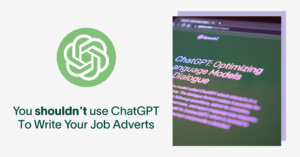Performance reviews are often a long, daunting process for HR leaders and managers alike. But when they’re not implemented with the right structure and intention, they could harm your DEI efforts.
Research consistently shows that some employee populations are more likely to experience unconscious bias during performance reviews — including women, people with physical disabilities, and neurodivergent folks.
So how do you build the most inclusive performance review process? We asked Abby Matthews, Lead People Partner at legaltech Juro, to walk us through 5 common performance review mistakes — and what to do instead.
1. Unstructured evaluation criteria increases unconscious bias.
“I don’t think I’m alone when I say that most people don’t like performance reviews,” laughs Abby. “One of the main reasons is because everyone does performance reviews differently — even at an organisational level.”
A 2019 meta-analysis found that employees are more likely to view the process favourably when they understand how they’re being evaluated, and they believe their supervisors are unbiased and fair. This tells us that in order to eliminate unconscious bias, organisations must follow a structured process that evaluates every employees’ performance by the same criteria. Measurement and metrics are key to making this work.
“The most important thing to keeping performance reviews structured is consistency,” Abby says. “You need measurable data that shows progress, not subjective statements about what someone did or didn’t do well. Data is the foundation of creating a structured performance review process — data is neutral, and helps get rid of bias.”
2. Waiting too long between performance review cycles increases the risk of recency bias.
“One key problem with the traditional performance review process is that organisations tend to do them once or twice a year,” Abby says. “That increases anxiety for the employee, because you’re more focused on reflecting on an entire year’s worth of accomplishments. Performance has to be a regular conversation.”
Long performance review cycles can increase the likelihood of recency bias — when a manager evaluates an employee’s performance based on the last few months, rather than in the context of an entire year.
To combat this, Abby suggests that managers hold performance conversations much more frequently to proactively highlight accomplishments and achievements in the flow of work.
3. Unclear, unspecific feedback is difficult to action.
Unclear, unspecific feedback makes it difficult for everyone to understand the changes they need to make to improve their performance. But for neurodivergent folks or people with cognitive disabilities, this lack of specificity or clarity can add an extra layer of exclusion.
“The problem with feedback is that if it’s not actionable or relevant, it’s going to be hard for anyone to implement,” Abby says. “Making feedback more inclusive means you need to be specific, timely, and clear — you also need to focus on the future and moving forward, not the past.
“It’s the same when you’re asking for feedback from peers or managers,” Abby adds. “You need to be specific about exactly what you’re asking for feedback on — whether that’s a project, a skill, or a behaviour you demonstrated.”
4. Performance reviews are often a one-way process.
One of the biggest problems about the current performance review process, says Abby, is that organisations view it as a top-down process, rather than a two-way conversation.
“Traditional performance review cycles often create a barrier to having a proper conversation — they’re not designed for the human part of work,” Abby says. “This leaves employees feeling fearful about how their managers are going to rate their performance.
“In reality, it needs to be a two-way conversation. Managers must build trusting, transparent relationships with their direct reports and focus on building a collaborative performance review process where nothing is ever a surprise.”
5. Linking performance reviews to compensation may increase inequity.
Pay and performance have always been interconnected — that’s nothing new. But we also know that some identity groups are more likely to experience discrimination and bias in compensation and performance review processes.
Black men, for example, are penalised when negotiating salary during the hiring process. When women have more than one job offer on the table, any attempt to negotiate on the preferred choice is three times more likely to get rejected.
To make performance reviews more inclusive, Abby suggests that organisations decouple pay from performance: “During the performance review, employees are already worried about how their rating might impact their income. To support inclusion and reduce this anxiety, conversations about pay and performance need to be separate. By combining them, there is a high risk of compensation being the main focus and performance being lost. They are both important topics and deserve equal attention.”
In addition, organisations should keep a close eye on data relating to promotion rates, performance ratings, and compensation benchmarks for different employee groups to help identify which groups are most likely to get left behind.
__
Performance reviews are an essential process that keeps your organisation moving forward. And as Abby notes, inclusive communication is critical to doing them well, and instilling the trust and transparency that fosters belonging.
Find out more about how Develop Diverse can help you build a more inclusive organisation by booking a demo here.





